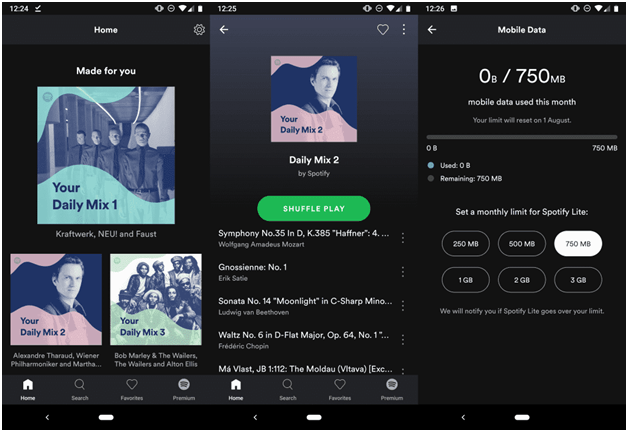Acquiring new customers and keeping business costs down have an inverse relationship. It isn’t easy to acquire more customers without spending enough money.
With customers becoming savvier, they like to know the value they’re getting before making a purchase decision. Thus, a business needs to educate and nurture its customers before convincing them to purchase from them. Two forms of customer acquisition models help acquire new customers, freemium and paid apps.
Freemium Apps

Freemium business model is a two-tiered model that engages its users through either a free tier or a premium tier, depending on whether they want to pay for an account. Free users have limited features in these apps, while premium users can access all the features.
The main goal of a freemium revenue model is to decrease customer acquisition costs while enhancing user engagement. Eliminating the cost of signing up for your account lowers the entry bar for new users. This makes it easier to avoid overspending on traditional promotional channels to acquire new customers.
Once you have built enough trust within your customers, you can highlight your best features and easily transit the user journey to the premium version. It is statistically proven that once customers find value in using a product, they stick to it for longer.
Implementing a freemium acquisition model requires you to strategically plan your user’s journey and put limitations on your product’s multiple aspects. Here are some ways you can do it:
- Feature Limitations: Offering limited features in the accessible version of your product and placing your USPs in the paid ones.
- Usage Limitations: Limiting storage, monthly credits, and data processes for your user.
- Limited Support: Offering limited customer services and resources for support.
Generally, businesses use a combination of these features to keep their product more creative for their users. The most important thing to remember here is that your limitations should leave your customers wanting more, but not so much that they miss out on your core values. Finding the right balance between your constraints requires understanding customer behavior and needs.
Also, Read – Mobile App: Out of the Box or Custom
Let’s talk about a few companies that rocked the freemium SaaS model.
– Spotify (In-app purchases) One of the brilliant freemium model examples is Spotify, which has multiple layers of limitations to create friction and increase user engagement. Customers using the freemium subscription model frequently convert to premium versions of the app because they see enough value and feel the cost is justified.

Apps like Spotify limit features in their free version and encourage users to upgrade to premium. The free plan lets you shuffle but serve ads in between. On the contrary, the premium version offers improved sound quality, individual track selection, and a much more luxurious experience.
The inability to switch to a specific song on the playlist while listening to music reminds users of what they’re missing. In addition to the limited features, the free version lets users skip four songs in an hour. The restriction is wholly eliminated after upgrading to premium.
Many other freemium apps that have performed excellently well among users are Trello, gaming apps, WordPress, and many more. Many shopping apps also offer in-app purchases and limit features in their free versions.
Also, Read – Why Should Every Mobile App Focus on the Users?
Risks Associated With The Freemium Model
One significant risk associated with the freemium model is the risk of undervaluing your product. Customers have high expectations with the paid versions once they start using the free version. The real challenge is to persuade customers without making them feel frustrated with the limited feature version. Since your customers need to see value in your product, stick with the premium version.
Paid Apps
We shall now address the benefits, risks associated, and ideal examples of paid apps, drawing a comparison between the freemium and subscription-based customer acquisition models. Paid apps are often overlooked because they have an associated cost. Users always look for an alternative with high competition in the app store. Developers are thereby challenged with finding the right balance between putting a cost and providing the best user experience. The total revenue doubled during the last few years, from $7.1 billion in 2011 to $15.4 billion in 2012. The revenue jumped from there to more than $30 billion in 2019.

While nearly all kinds of apps can attempt a subscription model, content-based apps and service apps like Evernote and LastPass work best in such a model. A subscription model might not work well for single-purpose, shopping, or gaming apps.
Benefits of paid apps:
Subscription-based apps offer a steady source of income, especially compared to other app revenue models. You must focus on creating hype about your app among your users or the way you market your app.
Another benefit of paid apps is more engagement among the audience. When people pay to subscribe to your app, they’ll use it more often since they want to make full use of their investment.
Risks Associated With The Paid User Acquisition Model:
While multiple benefits come with a paid model, several risks and challenges also accompany them.
- You need to provide new features and upgrades continuously.
- An onboarding or free trial period is vital and may require constant upgrading.
- Your app needs great support from both your marketing team and your customers.
- Transitioning from a freemium to a subscription model may result in losing many users.
One of the best companies rocking the paid model is Netflix.
Netflix is a content-based video streaming app that offers its users original content and already existing videos. Users are restricted to the number of screens and features based on the subscription they want to take. Other paid apps are HBO NOW, newspaper apps, Insider, etc.
Freemium VS Paid User Acquisition Model
Towards the end, let’s compare the two user customer acquisition models, freemium and paid apps, and see what works for which type of app.

All in all, the question goes back to the foundation of your app and audience niche. Take some time to consider how your desired customers will respond to either model. You must experiment with both models, collect data, and act accordingly. Regardless of which model you use, it would be best if you understood how to market your app and to structure your business.
To better understand the customer acquisition model you should choose for your business, get in touch with a renowned DevOps consulting firm and pave your way for new streams of increased customer engagement, revenue, and business growth.



